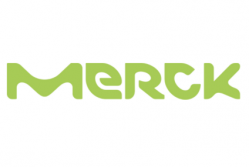For the last few years, there have been several developers of quantum dots but only two manufacturers with QDs in display products: Nanosys and QD Vision. But QD Vision seems to have largely retired from the display market, leaving Nanosys without significant competition for the moment.

Recently, Nanoco Technologies (Manchester, UK) announced relationships with display materials giant Merck and film coater Wah Hong, in addition to its three-and-a-half-year-old manufacturing agreement with Dow Chemical.
For an update on Nanoco’s activities, I arranged a telephone interview with Nanoco CEO Michael Edelman, which was held on November 3.
First, I asked Edelman for a summary of Nanoco’s technology. All of Nanoco’s competitors, he said, use a process called rapid (or hot) injection, in which the seeding and growth of the dot occur simultaneously. The process proceeds rapidly and is hard to control. Initial growth is so fast that it is not possible to stop it in time time to make dots small enough to produce a deep blue (450nm).
In 2001, Nigel Pickett, now Nanoco’s CTO, co-founded the company, and worked to separate the seeding and growth of the quantum dots. In Nanoco’s “molecular seeding method” the seed is a zinc-based molecule that is always same size and shape. A growth material is then added, which grows on the seeds. This is, said Edelman, a very highly controlled process that leads to dots with precise and controllable sizes, and thus precisely controlled color emission. The process proceeds at lower temperatures than hot injection, and lends itself to high-volume production. The process proceeds in solution and is, like hot injection, a batch process. But the batches can be larger than is practical for hot injection, Edelman said.
Cadmium-free is a Priority
Early in their development, Nanoco used its process to produce cadmium-based QDs with deep blue emission. Starting in 2004, the company initiated a strategy of developing cadmium-free material sets, and spent $50 million to do that. The performance gap between the Nanoco sets and cadmium-based sets is closing, Edelman said. I pushed him to quantify that, and he said Nanoco material sets can produce 90% of Rec.2020 with optimized color filters. Edelman didn’t say so, but that would be a few percentage points behind a cadmium selenide material set.
Edelman wanted to be clear that Nanoco does NOT use indium phosphide, as has been reported elsewhere. They use a compound semiconductor mix.
Edelman stated a clear strategic roadmap for quantum dots: backlight enhancement now, then QD color “filters,” and then electroluminescent QDs (or QLEDs) that would directly replace OLEDs in perhaps 10 years.
Edelman was bullish about Nanoco’s future, but may have exhibited an excess of enthusiasm when he said that QD Vision is out of the display business and “Nanosys is struggling.” QD Vision’s problems are no secret, but Nanosys seems to be flying high. I asked Nanosys Corporate Communications Manager Jeff Yurek to comment. He said, “Nanosys is in growth mode. Our industry-leading Quantum Dot technology is a key enabling technology for premium UltraHD TVs – the fastest growing segment of the TV market. Today, our materials and technology are in use in over 30 devices on the market – a claim no other company can make – and we see substantial growth going forward into 2017.”
As noted at the beginning of this column, Nanoco’s recent announcements have focused on its agreements with Merck and Wah Hong.

The Merck agreement entails the construction of a large manufacturing facility, and the licensing of Merck to manufacture and market quantum dots using the Nanoco technology, and to sell those dots to film coaters. Merck is now considering where to build its factory, Edelman said. In the meantime, Merck can obtain dots from Nanoco for qualification by customers.
Wah Hong is a larg Taiwanese maker and supplier of optical films, and would presumably be customer for a quantum dot ink produced by Nanoco, Merck, or Dow Chemical.
Dow Chemical was Nanoco’s first licensee three and a half years ago, and now has a large QD manufacturing facility, the largest is the world said Edelman, up and running in Cheonan, Korea (where Samsung Display is located).
Products using Nanoco-technology quantum dots are in qualification and, said Edelman, will be in commercially available products in the future.
So, what are we to make of this? The Dow Chemical deal and the long time it has taken to produce significant product has been a source of head-scratching for some time. Perhaps that is about to change.
Merck is a different story. Nobody knows the display materials business better than Merck does. If Merck is taking Nanoco seriously, then the rest of us should. How will we know if Merck is really serious? When we see a QD manufacturing facilty rising from a lot in suburban Darmstadt (or elsewhere). – Ken Werner
Ken Werner is Principal of Nutmeg Consultants, specializing in the display industry, manufacturing, technology, and applications, including mobile devices and television. He consults for attorneys, investment analysts, and companies re-positioning themselves within the display industry or using displays in their products. You can reach him at [email protected].

